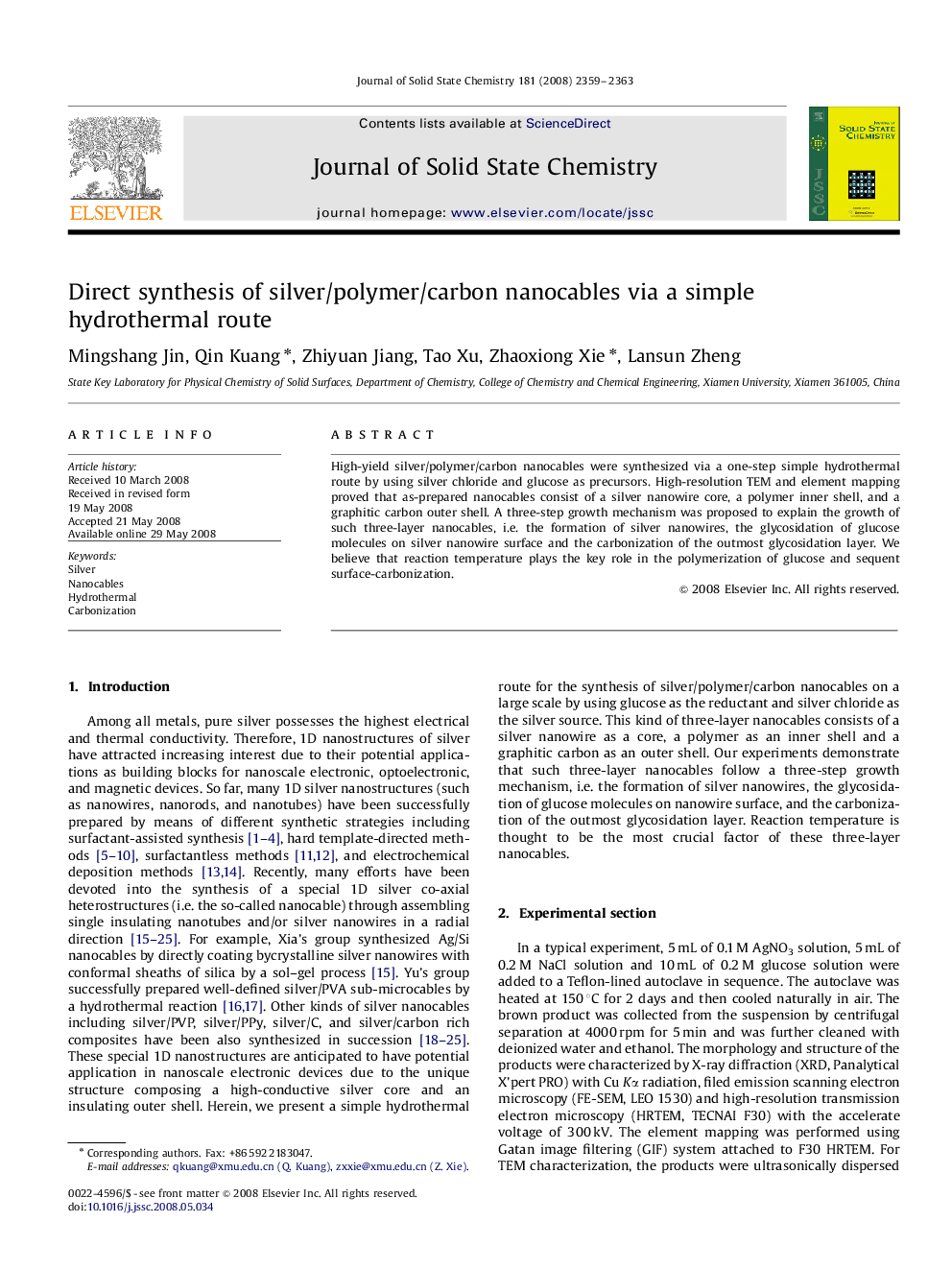| Article ID | Journal | Published Year | Pages | File Type |
|---|---|---|---|---|
| 1332734 | Journal of Solid State Chemistry | 2008 | 5 Pages |
High-yield silver/polymer/carbon nanocables were synthesized via a one-step simple hydrothermal route by using silver chloride and glucose as precursors. High-resolution TEM and element mapping proved that as-prepared nanocables consist of a silver nanowire core, a polymer inner shell, and a graphitic carbon outer shell. A three-step growth mechanism was proposed to explain the growth of such three-layer nanocables, i.e. the formation of silver nanowires, the glycosidation of glucose molecules on silver nanowire surface and the carbonization of the outmost glycosidation layer. We believe that reaction temperature plays the key role in the polymerization of glucose and sequent surface-carbonization.
Graphical abstractHigh-yield silver/polymer/carbon coaxial nanocables were synthesized via a one-step simple hydrothermal route by using silver chloride and glucose as precursors. Our experiments indicate that such novel nanostructures formed through the growth mechanism that the silver nanowires grow first, and then glycosidation of glucose occurs on the silver nanowire surfaces, and finally the partial carbonization occurs on the outmost surface of the polymer layer.Figure optionsDownload full-size imageDownload as PowerPoint slide
